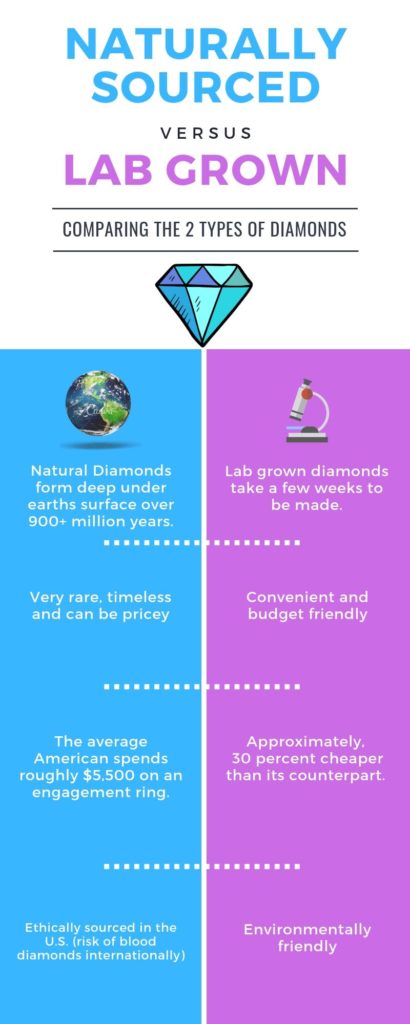Lab Grown Diamonds for Beginners
The Best Strategy To Use For Lab Grown Diamonds
Table of ContentsExamine This Report on Lab Grown DiamondsSome Ideas on Lab Grown Diamonds You Should KnowSome Known Details About Lab Grown Diamonds The Buzz on Lab Grown DiamondsThe Lab Grown Diamonds Statements
Typical ruby mining can have harmful results on the setting and often involves unethical labor methods. In comparison, lab-grown rubies are developed in regulated atmospheres using sophisticated innovation. They leave a smaller carbon impact and are without the moral problems usually connected with the ruby industry. Lab-grown diamonds use you a possibility to conserve substantially on your involvement ring spending plan without endangering high quality.What are lab-grown rubies? How do they contrast to all-natural rubies, and are they worth it?
They are more inexpensive, yet their value likely will not hold up over time. They will additionally never have the very same rarity, uniqueness and significance as an all-natural stone that was developed over billions of years deep in the planet. That claimed, we're all about options at Miriam's, and we constantly put customers first.
Lab-created diamonds, likewise understood as manufactured diamonds, are grown in a lab. They are the same to all-natural rubies in every means, consisting of the means they glimmer and their resilience.
Lab Grown Diamonds Things To Know Before You Get This
The process imitates the natural development of standard, mined rubies, which are developed deep in the earth's crust, under conditions of warmth and stress. A diamond's natural procedure takes billions of years to develop. On the various other hand, rubies developed in a laboratory take only a matter of weeks to develop.
One of the leading factors to purchase lab-created rubies is that they are a lot more economical. Male made rubies can cost up to 30 to 40 percent less than natural rubies of the exact same dimension and top quality.

There are possibly less environmental influences given that they are not mined from the planet, and they may be much safer to make. Lab-made diamonds still make use of bunches of power and take substantial factories to generate, so they may not be as environmentally-friendly as we believe. You may wish to trade-in or trade-up a lab-made diamond in a couple of years, only to locate it deserves pennies this post on what you spent for.
The 9-Second Trick For Lab Grown Diamonds
You might pay less to acquire your diamond now, yet you likely will not get a lot, if anything, back from it later. Natural diamonds are even more of an investment because they will always be an unusual product.
, weddings, and wedding anniversaries. When selecting a diamond, you want the finest you can manage.
No matter what they are called, a lab-grown ruby, real to its name, is developed in a research laboratory. Pressure High-Heat method, and the various other is the Chemical Vapor Deposition technique. The High-Pressure High-Heat approach is a simulation of the problems that lead to the development of natural diamonds in the depths of the planet.
How Lab Grown Diamonds can Save You Time, Stress, and Money.
Discerning in between natural rubies and lab-created ones is difficult for the average person. A diamond simulant is a rock that simulates a ruby, however it doesn't have all the exact same residential or commercial properties as a ruby - Lab Grown Diamonds.

Lab-created rubies are made from carbon like natural diamonds are. A lab-grown diamond's atomic make-up is the very same as that of a natural diamond.
The damage to ecosystems and watersheds expands well past the opening where the diamond mine lies. Between damages to all-natural habitats and using nonrenewable fuel sources for running tools, ruby mines are not environmentally friendly. Lab-grown diamonds, nonetheless, can be expanded utilizing renewable energies to power the facilities.
The Buzz on Lab Grown Diamonds
This is one more factor to consider a lab-grown diamond. This implies you can obtain a bigger lab-created rock for the same cash.
